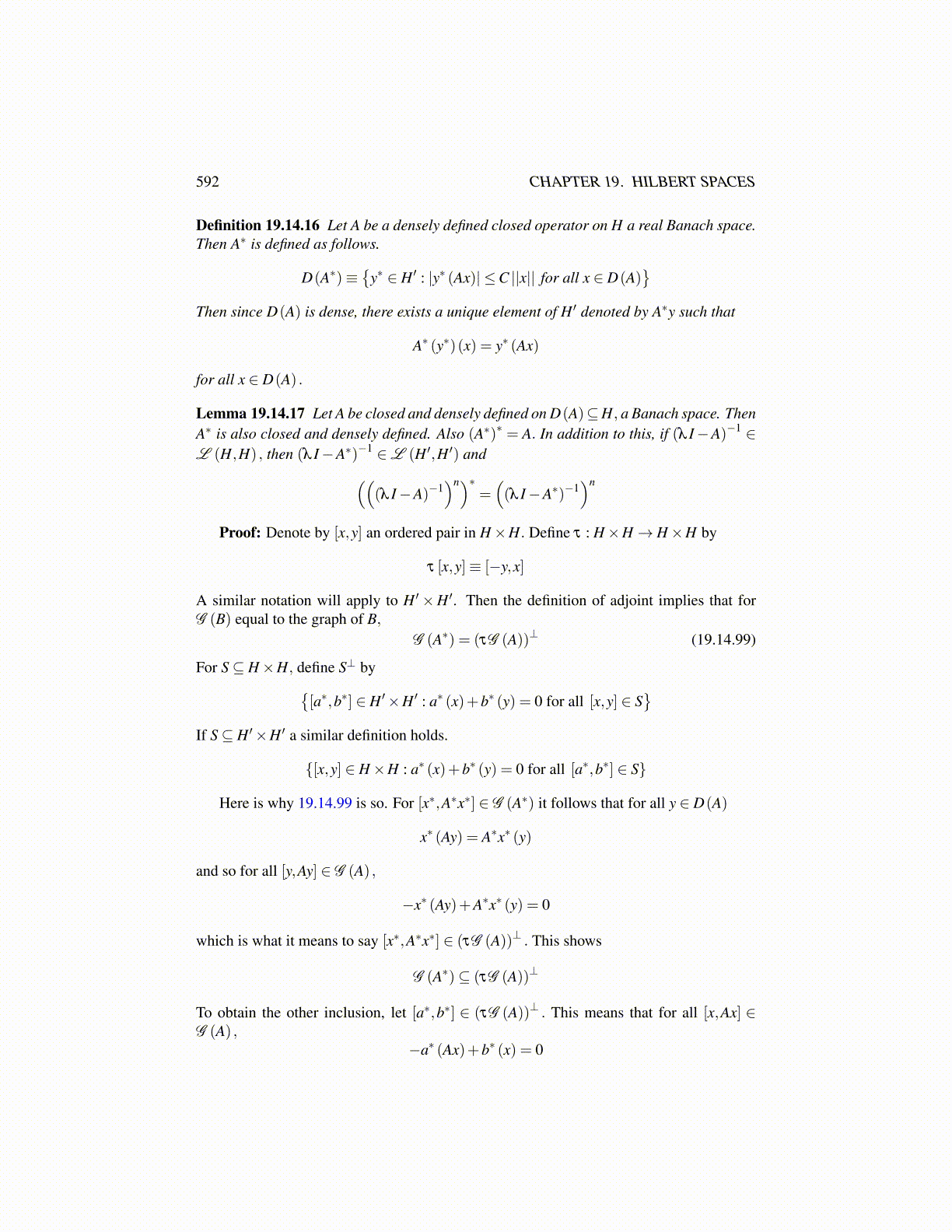
592 CHAPTER 19. HILBERT SPACES
Definition 19.14.16 Let A be a densely defined closed operator on H a real Banach space.Then A∗ is defined as follows.
D(A∗)≡{
y∗ ∈ H ′ : |y∗ (Ax)| ≤C ||x|| for all x ∈ D(A)}
Then since D(A) is dense, there exists a unique element of H ′ denoted by A∗y such that
A∗ (y∗)(x) = y∗ (Ax)
for all x ∈ D(A) .
Lemma 19.14.17 Let A be closed and densely defined on D(A)⊆H, a Banach space. ThenA∗ is also closed and densely defined. Also (A∗)∗ = A. In addition to this, if (λ I−A)−1 ∈L (H,H) , then (λ I−A∗)−1 ∈L (H ′,H ′) and((
(λ I−A)−1)n)∗
=((λ I−A∗)−1
)n
Proof: Denote by [x,y] an ordered pair in H×H. Define τ : H×H→ H×H by
τ [x,y]≡ [−y,x]
A similar notation will apply to H ′×H ′. Then the definition of adjoint implies that forG (B) equal to the graph of B,
G (A∗) = (τG (A))⊥ (19.14.99)
For S⊆ H×H, define S⊥ by{[a∗,b∗] ∈ H ′×H ′ : a∗ (x)+b∗ (y) = 0 for all [x,y] ∈ S
}If S⊆ H ′×H ′ a similar definition holds.
{[x,y] ∈ H×H : a∗ (x)+b∗ (y) = 0 for all [a∗,b∗] ∈ S}
Here is why 19.14.99 is so. For [x∗,A∗x∗] ∈ G (A∗) it follows that for all y ∈ D(A)
x∗ (Ay) = A∗x∗ (y)
and so for all [y,Ay] ∈ G (A) ,
−x∗ (Ay)+A∗x∗ (y) = 0
which is what it means to say [x∗,A∗x∗] ∈ (τG (A))⊥ . This shows
G (A∗)⊆ (τG (A))⊥
To obtain the other inclusion, let [a∗,b∗] ∈ (τG (A))⊥ . This means that for all [x,Ax] ∈G (A) ,
−a∗ (Ax)+b∗ (x) = 0